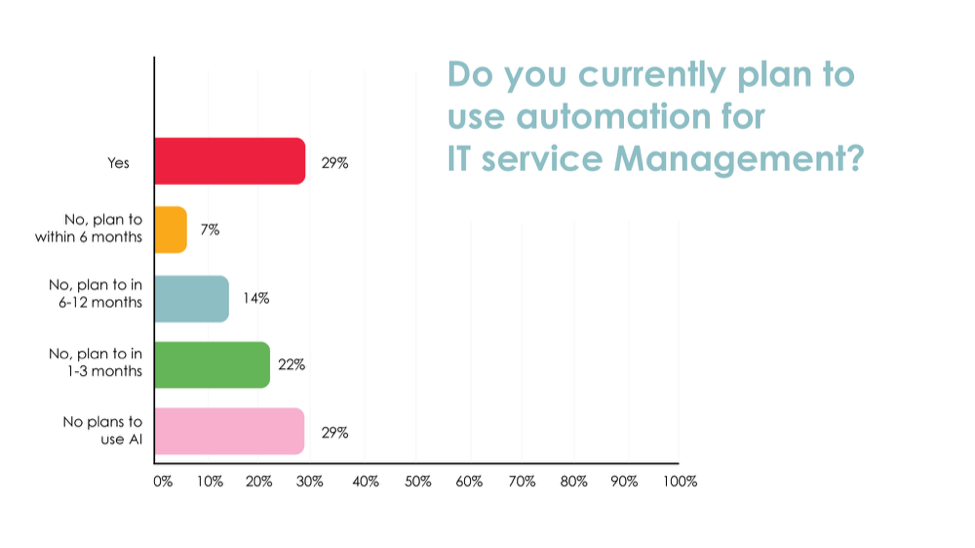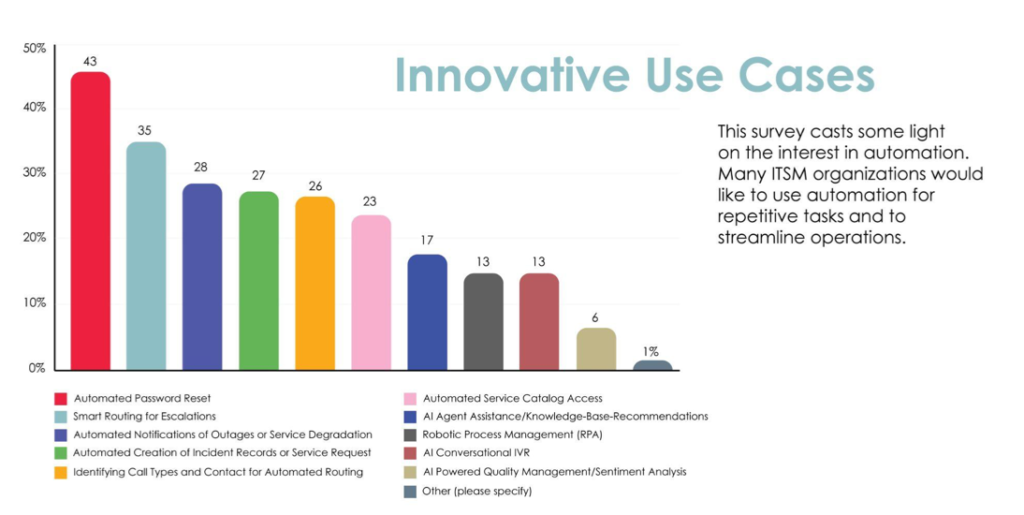Automation is a great tool that can help make your IT service management organization more efficient and improve the experience for both your IT analysts and end users. Implementing automation is a key goal for many in the IT industry. In a recent trend report conducted by Canam Research and sponsored by Bright Pattern to research trends in ITSM and ESM channels, it was shown that there was significant interest in automation in IT service management. Nearly a third of respondents of the survey, all of whom were managers, VPs, and directors of their IT organization, were already using automation for ITSM, while another 43% plan to implement automation in the future.
 The benefits of automation are immense, allowing your IT department or IT call centers to become more efficient while improving the experience for both your IT analysts and end users. Not only are there many benefits to automating tasks in your ITSM, but there are also many tasks that can be automated. In the same ITSM trend report, it is found that most of the innovative use cases that interested ITSM organizations centered around the automation of routine tasks in the contact center. The graph below illustrates just how strong interest is in the automation of routine tasks in the contact center.
The benefits of automation are immense, allowing your IT department or IT call centers to become more efficient while improving the experience for both your IT analysts and end users. Not only are there many benefits to automating tasks in your ITSM, but there are also many tasks that can be automated. In the same ITSM trend report, it is found that most of the innovative use cases that interested ITSM organizations centered around the automation of routine tasks in the contact center. The graph below illustrates just how strong interest is in the automation of routine tasks in the contact center.

From the graph, we can see that automation is involved in some of the top interesting use cases. These include automated password reset, automated notifications of outages or service degradation, automated creation of incident record or service request, identification of call type for automated routing, and automation of service catalog access.
Through automation, many ITSM organizations can streamline their workflow and increase efficiency, reducing the costs associated with repetitive tasks and leading to faster resolution and a better end-user experience.
To implement the right ITSM framework and ITSM processes in your organization, you need the right ITSM tools for the job. Check out Bright Pattern’s latest ITSM and ESM Trend Report for how you can adapt your IT organization to the demands of 2021.




